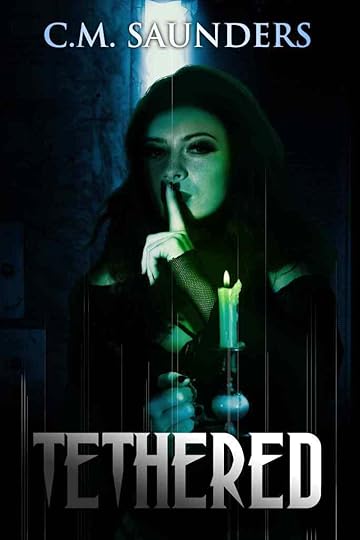A deep dive into Tethered
My latest novella, Tethered, is out now on 13 Days Publishing. What follows is the afterword from the novella, edited to remove spoilers.

Many of the so-called Internet rituals described in the story are real. That’s not to say that they actually work. But they are ‘real’ in the sense that they have been written about and discussed extensively online. I changed a few crucial details in my descriptions, especially that of the Elevator Game. I’m not saying I’m a believer, but I don’t want it on my conscience if one of my readers tries one of these things and ends up in an alternate dimension or something. Lots of people have tried the Elevator Game, with mixed results. They usually end up disappointed. However, as alluded to in this book, it might be worth noting that if it actually worked, they probably wouldn’t be in a position to tell anyone about it.
The death of Elisa Lam in 2013 is often linked to the Elevator Game because of the genuinely unsettling surveillance footage which emerged of her acting strangely in an elevator. Her demise is still shrouded in mystery and often cited as one of the most bizarre deaths in recent years. Was it an accident? Murder? Suicide? Or something altogether stranger?
Nobody knows, and ultimately, that’s what makes it so chilling. The other cases mentioned of people being found dead in water tanks are also real, and I am sure there are lots more that haven’t been so widely publicized. The Cecil Hotel (since rebranded as Stay on Main) in Los Angeles is a place with a very weird history, and Richmond House is also an actual building in Southampton, albeit with a slightly more mundane background.
The summer of 2018 saw the arrival of a British reality TV show called The Circle, where a group of strangers were kept segregated and could only communicate with each other via a special social networking platform only they could access. One participant used his girlfriend’s pictures, and suckered everyone else into thinking he was someone he wasn’t. He won the first prize. I was fascinated by the way he manipulated the other players. It just goes to show that in an online world, you can be whoever you want to be. It also shows that even if there are red flags, the majority of people will ignore them and believe what they want to believe. I wanted to do something similar with the reader in Tethered. Anyone familiar with my work will know how much I love twist endings. I hoped to string you along for a while, feeding you just enough information so you think you know what will happen, and pull the rug out from under your feet. Then, just as you were getting your bearings, I wanted to do it again.
You may notice how integral the number 14 is to the plot. After setting sail from Southampton, a city integral to the plot of Tethered, the Titanic hit the iceberg on 14th April, the Cecil Hotel has 14 floors (Richmond House has only 13, I changed it for effect) my version of the Elevator Game has 14 steps, and both the serial killer Richard Ramirez and the ‘Man in Black’ from Tethered needed 14 victims. I thought this would be a bit more original than the usual 13. Regular readers of mine might also note that it fits in with one of my previous books, Apartment 14F. That story is about an English teacher living in China and realising his apartment is haunted. The Chinese take numerology very seriously. Every number is symbolic. Mainly because of the phonetic similarity when pronounced in Mandarin, the numbers ‘one’ and ‘four’ have come to signify loneliness and death, two predominant themes in both that book and Tethered.
Tethered is out now on paperback and ebook.



